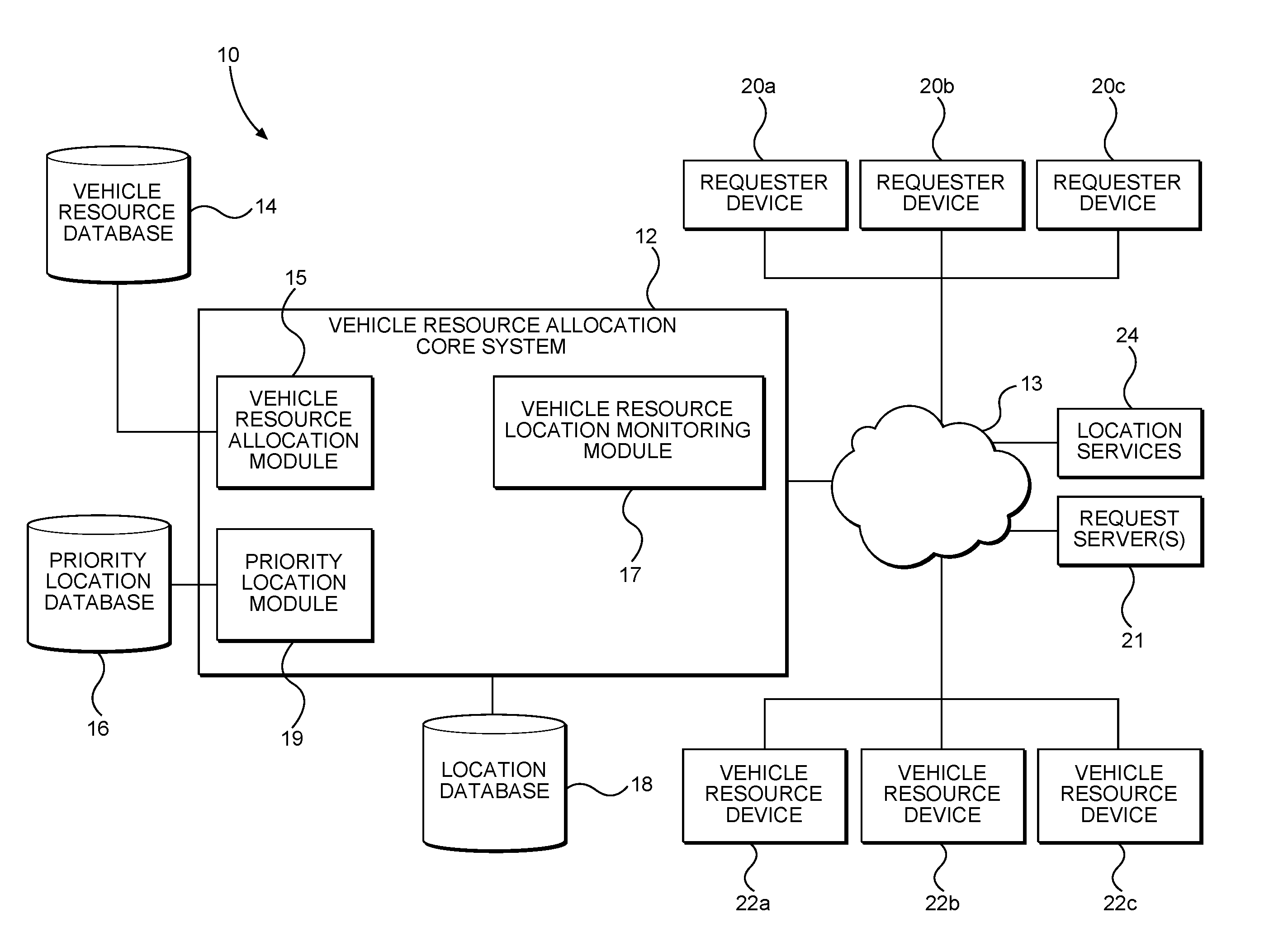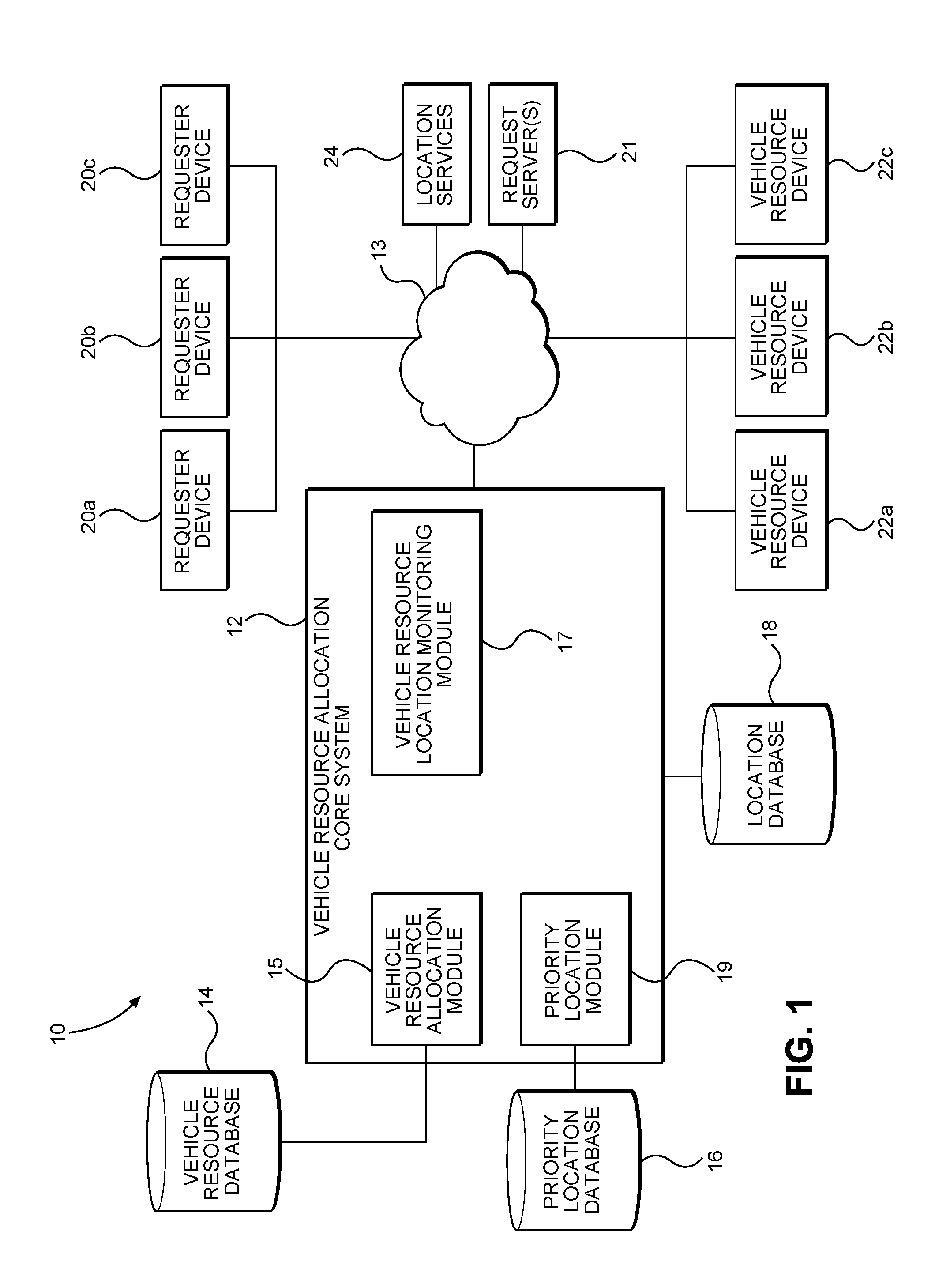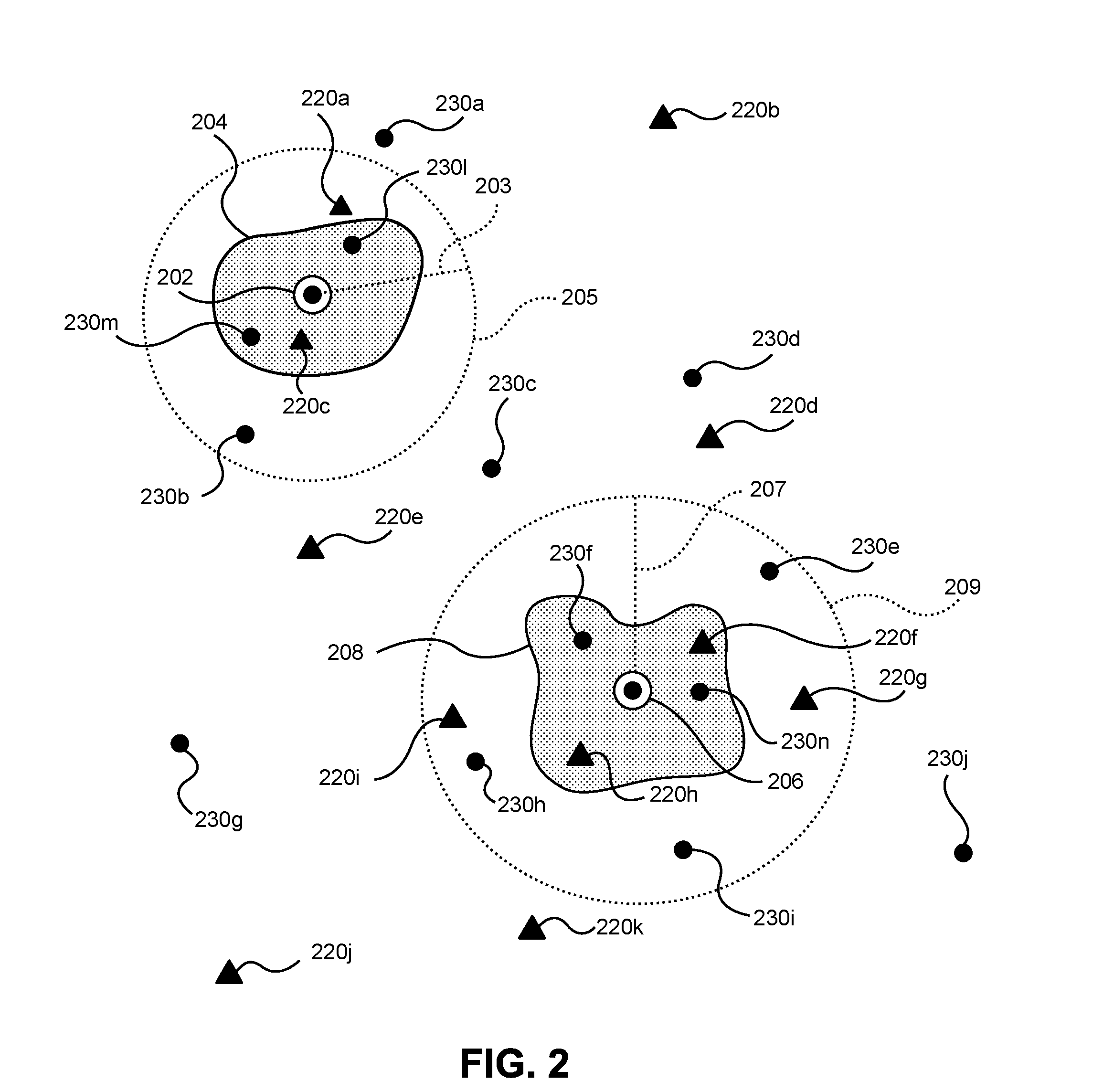Systems and Methods for Allocating Networked Vehicle Resources in Priority Environments
a networked vehicle and priority environment technology, applied in reservations, data processing applications, instruments, etc., can solve the problem of not taking into account other factors contributing to the overall efficiency of how vehicles and other mobile resources are allocated
- Summary
- Abstract
- Description
- Claims
- Application Information
AI Technical Summary
Benefits of technology
Problems solved by technology
Method used
Image
Examples
Embodiment Construction
[0018]In brief, various embodiments of the present invention allow for priority locations (also referred to in this disclosure as ‘hot spots’) to be created and / or identified within a vehicle resource allocation system. A hot spot is a location or area where demand for vehicles and / or other types of mobile resources is or is expected to be particularly high (e.g., relative to other locations). As discussed in this disclosure, a hot spot may be associated with an area outside of but proximate to the hot spot (referred to in this disclosure as an ‘extended priority zone’). The extended priority zone may not have the particularly high demand of its associated hot spot. The extended priority zone may be defined, in some embodiments, by an ‘attraction distance’ and / or by a specific geographical area (e.g., surrounding a hot spot). In this disclosure, a hot spot and its associated extended priority zone may be referred to, collectively, as a ‘priority environment.’
[0019]In accordance with...
PUM
 Login to View More
Login to View More Abstract
Description
Claims
Application Information
 Login to View More
Login to View More - R&D
- Intellectual Property
- Life Sciences
- Materials
- Tech Scout
- Unparalleled Data Quality
- Higher Quality Content
- 60% Fewer Hallucinations
Browse by: Latest US Patents, China's latest patents, Technical Efficacy Thesaurus, Application Domain, Technology Topic, Popular Technical Reports.
© 2025 PatSnap. All rights reserved.Legal|Privacy policy|Modern Slavery Act Transparency Statement|Sitemap|About US| Contact US: help@patsnap.com



